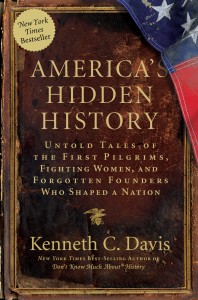As bedrock businesses, like the auto industry, are being transformed in the current economy, and American workers come under intense pressure, here’s some “Hidden History” of another financial meltdown. In the late 19th century, labor and industry were fraught with conflict as American business soured. Only back then, the conflict turned deadly. On July 6, 1892, 3,800 striking steelworkers fought with strikebreakers in a daylong battle that left ten men dead. Their story is a somber reminder of the harsh history of American labor.
The Homestead Strike was a labor lockout and strike that began in late June 1892 in the town of Homestead, near Pittsburgh, at the Carnegie Steel Works.Owned by Andrew Carnegie, the plant was managed by Henry Frick, a Pittsburgh industrialist who made his fortune producing coke needed for steelmaking. The strike was organized by the Amalgamated Association of Iron and Steel Workers, an early trade union, which had some success in organizing workers and negotiating contracts with other steel factories.
During a severe economic downturn, Frick and Carnegie determined to break the union. Carnegie left the country and Frick was given control of the union-busting effort. He surrounded the plant with a 12-foot high fence, three miles long, and equipped with guard towers and sniper posts from which guns could be fired. The strikers renamed the plant “Fort Frick.” Frick then brought in a private army of Pinkerton Detectives, often used in that time as strikebreakers.
When hundreds of Pinkerton men, armed with Winchester rifles, were moved toward the factory on river barges in the middle of the night, striking union members raced from house to house –in Paul Revere fashion– raising an alarm. The strikers attacked the barges with burning oil and dynamite. And on July 6, a pitched gun battle raged for more than twelve hours between the Pinkertons and strikers. When it was over, three Pinkerton men and seven to nine workers lay dead or mortally wounded.
Pennsylvania’s governor called out the state militia to put down the Homestead strike. The soldiers took over the plant, and strikebreaking workers were shipped in by railroad car. The strike was crushed, and with it, the Amalgamated Association collapsed. Carnegie and Frick slashed wages, instituted a 12-hour workday and fired hundreds of workers. Union members were blacklisted and unable to return to work.
In a bizarre aftermath to the strike, anarchist Alexander Berkman tried to assassinate Frick in revenge for the dead steelworkers. Berkman had plotted this attack with his lover, Emma Goldman. (In her memoirs, Goldman wrote of an unsuccessful attempt at prostitution to earn money to fund their plan.) A few weeks after the strike began, on July 23, 1892, Berkman shot Frick, but only wounded the businessman. Berkman was sentenced to 22 years in prison and served 14. There was no evidence to connect Emma Goldman to the plot and she went on to become a noted speaker, writer and publisher. She was jailed for opposing the draft during World War I and the government later deported her and Berkman to Russia during the first “Red Scare” in 1919.
Frick, an avid art collector (and named in April 2009 by financial network CNBC as one of the “Worst American CEOs of All Time”), later moved to New York where he built a Fifth Avenue home occupying a full city block to house his art collection. The home is now the Frick Collection.
Carnegie later sold his steel business to J.P. Morgan, who told the Scottish-born, poor-boy-turned-industrialist that he was now “the richest man in the world.”
Steelworkers were left without a union until the 1930s. Most labor laws protecting workers were not enacted until the 1930s. (A monument to the dead steelworkers was erected in 1941.)
